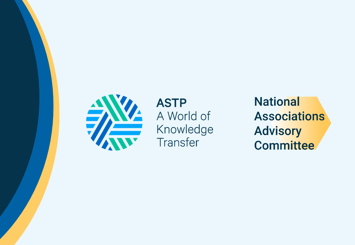
Academia–Industry Collaborations: Moving…
Across Europe, universities and research institutions are being called upon to play a more active role in driving…

As the UK’s preeminent university patent holder, Oxford University has a dense portfolio of technologies available for licence to companies, which stretches across all the physical and life sciences.
Each has the potential to have an impact either economically or to society, or both. Consequently, it is crucial to OUI that we find the right home for each technology with licensees that have the know-how, vision and resources to develop our IP in an effective manner.
To help with this, over the past two years, the Operations team at OUI has developed a methodology for scoring existing licensees in terms of their suitability. This helps us to focus our resource when managing an increasingly large portfolio of licensees and enhances internal communication in relation to the licensee portfolio.
Scoring methodology
Our scoring methodology is based around four criteria: credit-worthiness, overall relationship with a licensee, how licensees are using the technology and the quality of reporting and information flow.
We assess each point thusly:
We use a score of one (low) to three (high) for each criterion (see below). We have developed our own definitions for each score to maintain consistency, for instance, a ‘High’ score on ‘Quality of reporting’ would mean that a licensee reports on time according to the licence and follows the reporting clauses in full.

We multiply the individual scores together to give an overall score for each licensee (‘Multiple’) and detail a justification for each score. The results can be displayed in chart format and trends observed.

Figure 2: Scores; multiple; score justifications using framework. Please note that Licensees #1, #2 and #3 are not real licensees and the scoring is merely illustrative.
The scoring can be reviewed periodically or as required to provide a current overall view of the condition of the licence portfolio.
OUI plans to continue to use and develop the scoring methodology, adding more licensees and refining/updating the scores and consistency in approach.
Measuring trust and consistent scoring
Ultimately, the question we’re looking to answer with this is do we trust that our licensees will do the best job in developing our IP? To answer that, the scoring methodology set out above takes into account three dimensions of trust measurable by the Grunig Relationship Instrument as described by the Institute for Public Relations[1]: competence, integrity and dependability/reliability.
Trust is generally described as having the characteristic of being multilevel, and in our situation we have taken account of the different parts of the business that are affected by the licence agreement, such as the finance function, our business relationship with the licensee and the legal compliance with the agreement. Another characteristic of trust is that it is communication-based. For OUI, this means we look to receive accurate information from licensees, that licensees provide explanations where necessary and for licensees to demonstrate appropriate openness. Trust can often be dynamic so needs to be measured over a period of time.
It goes without saying that organisations need to decide what is important to them and find a way to measure it; one organisation’s metric may not work for another. To aid in this, there are some questions that you can ask:
In a PwC white paper on trust insight[2], the authors describe three trust drivers: competence trust (whether or not the organisation ‘does what it says on the tin’), experience trust (whether the organisation consistently meets the stakeholder’s expectations) and values trust (whether the organisation and the stakeholder share common values). Again, the OUI scoring systems draws upon these three elements of trust: we are expecting our licensees to develop the intellectual property licensed, to keep us up-to-date on progress or any issues and to comply with their obligations in the licence agreement.
[1] https://instituteforpr.org/guidelines-for-measuring-trust-in-organizations-2/
[2] https://www.pwc.com/my/en/assets/trust/trust-insight-understanding-the-value-and-drivers-of-organisational-trust.pdf

Across Europe, universities and research institutions are being called upon to play a more active role in driving…

In an era where universities and research organisations are called upon to deliver more than just excellent teaching…

In the ever-evolving landscape of knowledge transfer, data doesn’t just tell a story—it defines direction. With…
Join our newsletter and get the latest news